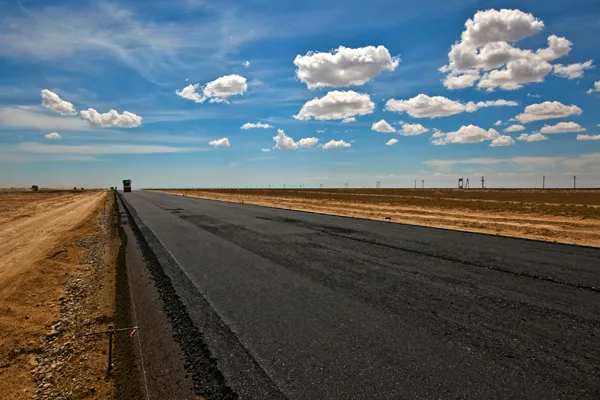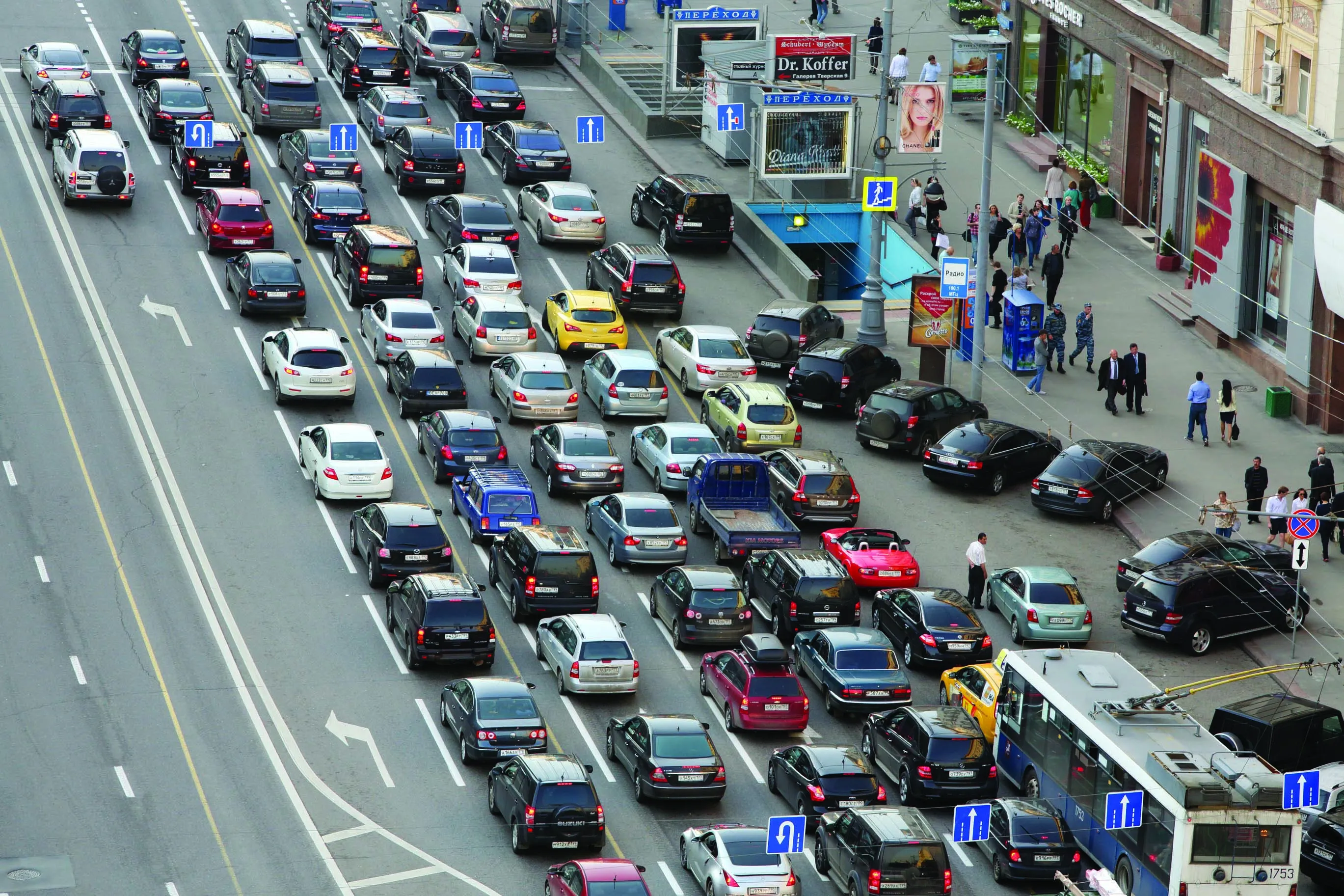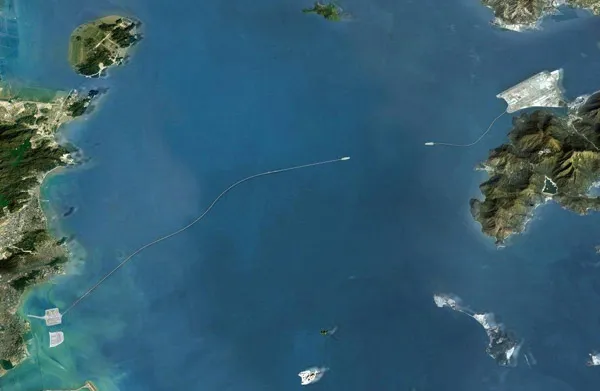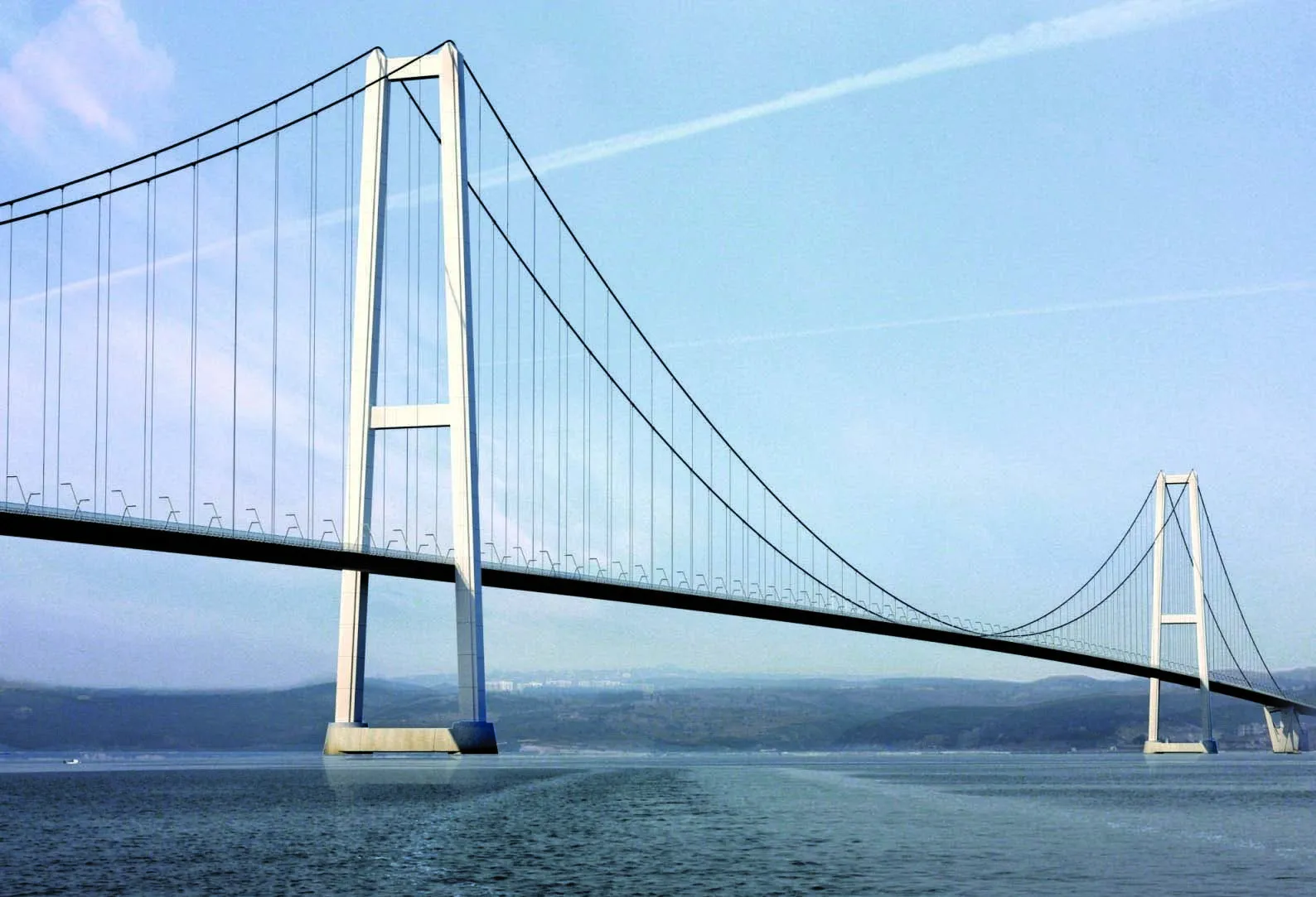Huge highway developments are being planned and carried out to further improve East-West transport, with Central Asia a key region as Patrick Smith reports
History was made in late 2010, when one of the biggest road building projects ever envisaged in Eastern Europe was given the green-light.
It was the occasion when Russian president Dmitry Medvedev signed a law that would allow his country to build its segment of a huge highway around the Black Sea.
The idea is to complete the 7,140km highway, wi
April 4, 2012
Read time: 9 mins

Huge highway developments are being planned and carried out to further improve East-West transport, with Central Asia a key region as Patrick Smith reports
History was made in late 2010, when one of the biggest road building projects ever envisaged in Eastern Europe was given the green-light.It was the occasion when Russian president Dmitry Medvedev signed a law that would allow his country to build its segment of a huge highway around the Black Sea.
The idea is to complete the 7,140km highway, with four lanes in each direction, which will go round the Black Sea, and which will also involve all the other countries on the coast of the inland waterway: Turkey, Georgia (see also panel), Ukraine, Moldova, Romania, Bulgaria and Greece.
The Black Sea, bounded by Europe, Anatolia and the Caucasus, is eventually connected to the Atlantic Ocean via the Mediterranean and Aegean Seas and various straits. The Bosphorus Strait, on which Istanbul, Turkey, stands connects it to the Sea of Marmara, and the strait of the Dardanelles connects that sea to the Aegean Sea region of the Mediterranean, waters that separate eastern Europe and western Asia.
Among important cities along the coast of the Black Sea are Sukhumi on its east coast; Burgas, Varna (Bulgaria); Batumi, Hopa, Poti (Georgia); Constanta, Mangalia, Navodari (Romania); Novorossiysk, Sochi (Russia) and Giresun, Istanbul, Ordu, Rize, Samsun, Trabzon, Zonguldak in Turkey.
Also along the coast are the major cities of Kerch, Kherson, Odessa, Sevastopol and Yalta in Ukraine, where plans are in hand for a new eight-lane road bridge over the River Dnieper near the town of Ukrainka. When complete it will form part of a 213km ring road project around the capital Kiev, outlined in the country's state road development programme.
It is also reported that thanks to some recent major reforms of Ukrainian legislation, project finance using the Public Private Partnership (PPP) mechanism finally appears to have become a realistic possibility.
At President Medvedev's signing ceremony in the Russian capital, Moscow, he put into law a Bill on the ratification of the memorandum of mutual understanding on the coordinated development of a ring highway around the Black Sea.
Originally, the memorandum was signed by the member states of the
The memorandum stipulates the construction of the ring highway via Istanbul, Samsun, Trabzon (Turkey) Batumi, Poti (Georgia), Novorossiisk, Rostov-on-Don and Taganrog (Russia), Mariupol and Odessa (Ukraine), Chisinau (Moldova), Bucharest (Romania), Haskovo (Bulgaria), Edirne and Istanbul (Turkey) and Komotini and Aleksandroupolus (Greece).
It was Russia, which in 2007 called on other Black Sea littoral nations to link uncoordinated highways with each other to form the circular highway network around the Black Sea. The draft memorandum was signed by the heads of state from 11 countries in Belgrade, the Serbian capital the same year.
Each country will be responsible for the construction and upgrade of the highway in its territory and for connecting existing roads to the new sections, while the construction of many exits will make it possible to also link the Black Sea circular highway with Armenia, Azerbaijan, Albania and Serbia, and further afield.
It is said that the future highway will boost trade, economic, humanitarian and tourism ties in the Black Sea region and across the entire Eurasian continent, and Bulgaria has already said it will complete its section by 2017, while in 2007 Turkey opened a US$4.2 billion, 542km highway along its Black Sea coast after 20 years' construction.
The Turkish Transportation Ministry is investing heavily at present in a bid to develop the country's highway network. In September 2009, together with Turkey's General Directorate of Highways (KGM), the ministry presented plans for 12 new highway routes which are due to be completed by 2023.
In the provinces of Kastamonu, Zonguldak and Düzce on the Black Sea, extensive construction projects are either already underway or due to start.
One such construction project is the 1,050m long Dorukhan Tunnel on the Kastamonu Highway, where
Work is already underway on a number of highway and other related projects as part of the development for the 2014 Olympic and Paralympic Winter Games to be held in Sochi on Russia's Black Sea coast. And Russia's
Rosavtodor plans to invest US$54.75 billion on construction a network of new toll roads in Russia, a programme that calls for the construction of 1,159km of toll roads. It is not clear whether further financing will be required from private sources but given the scale of the works planned, it seems likely that Rosavtodor will want to encourage private investment. Meanwhile, completion of the new M-11 Moscow-St Petersburg tolled highway now looks likely to be delayed from 2018 until 2019.
As huge as the Black Sea undertaking is, it is only one of a number of massive highway proposals for the region, which takes in many routes of the fabled (now revived) Silk Route system of highways that allowed (and still does) trade between the east and the west, from China (the foremost economic power in Eurasia) to Europe.
A project for the construction of a highway connecting the Black and Baltic Seas will be discussed in October at Cernauti, Romania, says Helmut Meelich,
According to reports the need to build a transport corridor connecting the Black and Baltic Seas through Suceava, also in Romania, and Cernauti, was pointed out to him recently during a meeting with authorities from Cernauti, Ukraine and County at the Siret border crossing.
It is understood the project presented by Romanian and Ukrainian authorities envisages the highway being built on route E 85, from Marasti to Siret and then through Cernauti, Ternopil (Ukraine). It will be linked to the Wroclaw-Lviv (Poland)-Kiev (Ukraine) Highway, which is under construction, thus connecting European Corridors III; IV and IX.
A major proposal from Russia would involve the construction of a Europe-Caucasus-Asia highway, which will link France to China, passing through Belgium, Germany, Poland, Ukraine, Russia, and the important Central Asian states of oil and gas-rich Kazakhstan, Uzbekistan, Turkmenistan and Kyrgyzstan, with the Black Sea Highway a part of this huge network of roads.
Another link of an inter-continental project is a road transport network which is being implemented by the
The largest of the former Soviet republics in territory (excluding Russia), it is the ninth largest country in the world; is land-locked, and possesses enormous fossil fuel reserves and plentiful supplies of other minerals and metals, while boasting a large agricultural sector featuring livestock and grain.
The region is a magnet for investors, and China's economic muscle is not hard to find, involving projects such as highway construction in Tajikistan and Kyrgyzstan; gas pipelines in Turkmenistan and Kazakhstan, and hydropower plants in Tajikistan and Kyrgyzstan.
As examples, a gas pipeline of over 2,200km runs from Kazakhstan to China while over $7 billion was invested in a pipeline from Turkmenistan to China. However, Russia, the
Kazakhstan, strategically located between Russia and Central Asia, has for centuries been a crossroads of the old Silk Route and with its open spaces and low population density, its economy is said to be one of the most freight-intensive in the world.
"Being sandwiched between Europe and Asia, Kazakhstan boasts of a great transit potential, as there is no alternatives for Asian states to link to Russia and Europe," says Kazakahstan officials.
According to the
"At present, there is a problem of poor condition of the transport sector fixed assets, obsolete infrastructure and technology," note the officials.
"The transportation sector and telecommunications will need to grow in order to accommodate the needs of other industries. Growth here is likely to attract further investment in other sectors as these infrastructure changes improve the overall business climate. Although Kazakhstan has a basic transportation network and skilled labour force, much investment will be required in the years ahead. Infrastructural investment requirements through 2030 [the date of the Kazakhstan Plan] are expected to total more than $25 billion, and of this 40% will be needed for railway transportation; 23% for highways and motor transport, 25% for telecommunications, and 12% for the air and water transport systems." In 2009, the World Bank agreed a $2.125 billion loan for the Kazakhstan South-West Roads Project to help upgrade the trade route linking China to Russia and Western Europe through Kazakhstan, bringing a helpful economic stimulus to some of Kazakhstan's poorest provinces.
The project will boost Kazakhstan's competitiveness and bring significant economic benefits both to Kazakhstan and to the broader Central Asia region.
The World Bank is helping to finance and rehabilitate a southern section of the 1,062km stretch of road between Shymkent and Aktobe/Kyzylorda Oblast border, part of a $7.5 billion international transit corridor development programme of the Government of Kazakhstan to upgrade approximately 2,800km of the CAREC corridors within Kazakhstan linking China (at Khorgos) to Russia (at Zhaisan).
Other key development partners include the
"Upgrading this key road will give a major stimulus to the Kazakh economy because construction of new stretches of the road and rehabilitation of the existing sections will create about 35,000 new jobs," says the World Bank.
According to the latest reports construction works in Kyzylorda oblast are underway with 2,077 pieces of road machinery, 16 asphalt plants and eight crush mills operating, and 180 rail cars of construction materials being supplied daily. Contractors in south Kazakhstan are also starting work.








